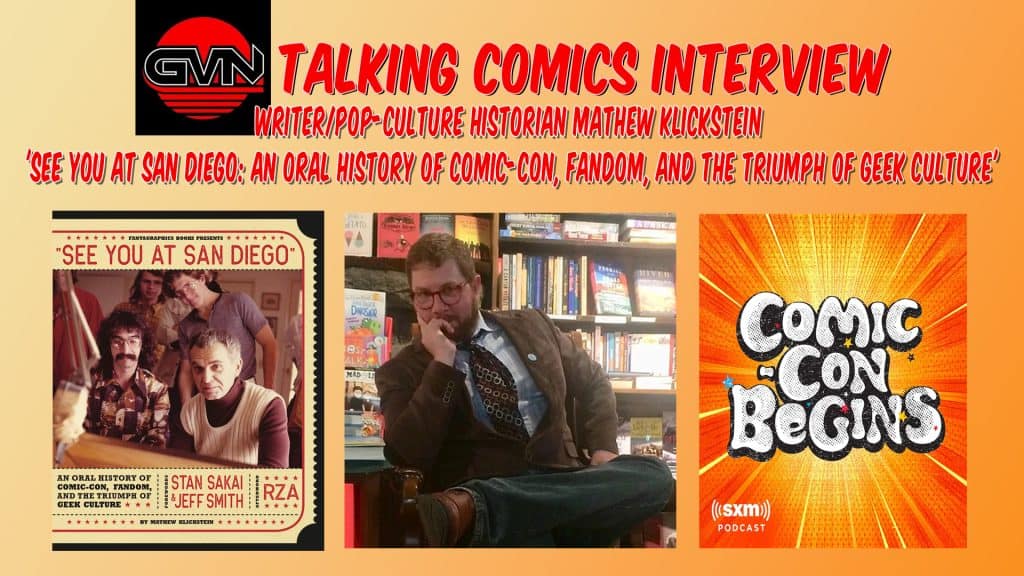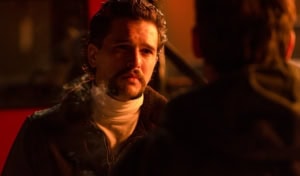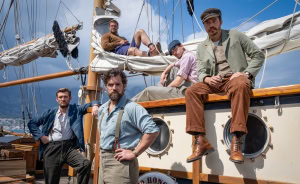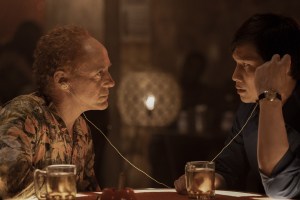Mathew Klickstein
In what is commonly known by people who cover this wonderful thing that we call “Geek Culture” as my “paying job,” I walk a great deal. To pass the time as I walk, I have listened to an inordinate amount of audio books and podcasts. One of those that I listened to was Mathew Klickstein’s six-part audio documentary, Comic-Con Begins. This podcast was produced in partnership with SiriusXM/Stitcher. Comic-Con Begins was a historical look back the origins of the San Diego Comic-Con and the people who brought it to life. As a comic and pop culture nerd, I enjoyed it very much.
But coming September 6th, Mathew is expanding that work into a new book by Fantagraphics, See You at San Diego: An Oral History of Comic-Con, Fandom, and The Triumph of Geek Culture. In this book, he expands the story while including numerous photos and memoirs of the people integral in making the “Comic Con” what it is over the 50 years of its existence. So, in anticipation of its upcoming release, we recently had an opportunity to sit down with Mathew for an in-depth conversation.
GVN: Thank you so much for some of your time Mathew. You have had an impressive and truly diverse career, starting at an early age. Not too many people write their first novel at age 13. What was it that inspired your love of writing and what WAS that first novel?
The Inspiration of Creation
MK: Thank you for saying so. It’s the one thing I have any real agency over: how hard I’m willing to work. I’m reminded of Andy Warhol’s inspirational quote: “Don’t think about making art, just get it done. Let everyone else decide if it’s good or bad, whether they love it or hate it. While they are deciding, make even more art.”
As a kid, I read a great deal. But I also watched a lot of television (a lot; latchkey kid style) and watched a lot of movies (including those that other kids’ parents didn’t let them see and probably shouldn’t have). I played a lot of video games, particularly RPGs, as well. I was just in a constant bubble of stories and information. I would also play a lot of “imagination games” with my friends who were equally creative.
We’d make little radio shows in our garages, short films with someone’s dad’s big ol’ bulky camcorder. The works. And remember, this was before social media and YouTube and the like, so we were just making it all for ourselves. We’d just tape our radio shows on little handheld recorders and then summarily lose the cassette tapes or tape them over with other future shows. Just as with our VHS tapes from the camcorder.
Writing Stories
The process was what we enjoyed; most of the time we barely even showed other friends or our parents what we did. We were driven by the enjoyment of making stuff, of telling stories. At one point around the end of this carefree period in my life – twelve or so – I got in some trouble with my mom, and being an 80s Kid, the worst punishment she could dole out was “NO TV TONIGHT!!” I was crushed. There was an episode I’d been waiting for all week. Beverly Hills 90210, and I just had to know what would happen next in the continuing melodrama’s storyline.
But no TV is no TV, and when I asked my mom what else I could do, she famously said, “You like writing stories. Why don’t you write one?” So, I did. And it became a sci-fi/thriller of the likes of a Twilight Zone episode (a BIG influence on me growing up and still is to this day).
The short story “One Among Us,” was about four very different people who wake up on a disabled escape pod in the middle of Outer Space. This was without any memory of who they are or what they’re doing there. At least before realizing one of them is a cold-blooded killer bent on murdering the others. That turned out to be seventeen pages.
First Novel
I turned it in as a project shortly after for English class, and my teacher – who was not well known for her cordiality and generosity of praise – was very impressed. She suggested I expand it. Which I did. First it became thirty-five pages, and then that summer at, yes, the ripe age of thirteen, I expanded it further into a full-fledged 350-page novel.
Against the Dark
Just as with my earlier creative machinations with friends, I never even intended on doing anything “real” with it (I wouldn’t have had any means of publication even if I had). Every summer thereafter, I wrote a novel. I believe I wrote five throughout high school and a few more in college. At which time, I had switched my efforts to screenwriting and began churning out scripts at a high pace. A few of which were later optioned and one of which – for good or ill – became Steven Seagal’s one and only horror film to date, Sony Pictures’ Against the Dark.
GVN: You have also taken an interest in supporting those with disabilities. As a father of an autistic son, I appreciate that. What made you decide to put your talents and time in pursuing projects to benefit and assist those with special needs?
Working with Special Needs
MK: I’ve always enjoyed a special connection to and affinity for working with the so-called “disabled community” over the course of my life. I was the teacher assistant for the special-ed class as early as junior high and remained friendly with a number of the students in that program. Especially when many of us ended up in the same high school later on. When I got to film school at USC, I met two different people who suggested I listen to the Kids of Widney High. A group of students in a music program at a special-ed high school who put out their own raucous rock music. One of them had a tape and I listened to it and loved it.
Widney High School
I contacted the music class, and it turned out Widney High School was basically around the corner from USC. I was invited to the music class and fell in love with what they were doing. I spent much of my four years in college working with the class and the members of the band. Over time, growing close with them and their families, driving them to gigs and working with them on a cascade of different projects. This included short films and music videos.
Act Your Age: The Kids of Widney High Story
After college, I worked with a group of passionate rich kid friends who helped us put together a full-fledged tour for the band up the Coast from LA to Seattle and back. During that time, we shot it all together as a very DIY “tour diary” type of documentary. After which, we later edited it together and showed it around a bit. It’s called Act Your Age: The Kids of Widney High Story and is available for streaming on Troma’s service, Troma Now. (Lloyd Kaufman and the Troma gang have always been great to the band and me, so it made sense to go with them in the end).
The Work Continues
I guess after all these years, especially through my experiences with the Kids of Widney High, I just grew comfortable working with such folks. Doing so at other art facilities and schools around the country when I moved from place to place. This included groups like Phamaly based out of Denver that is a four-decade-old theater troupe working exclusively with actors/creators with disabilities.
We also did a book for younger readers about the Kids called The Kids of Widney Junior High Take Over the World! That was around two years ago. For the book, we aged the characters down a bit to junior high to be more accessible for younger readers. The Kids of Widney Junior High Take Over the World! has won some awards and has received great praise for opening up that world more for younger minds. This included a very nice video post about it from Mayim Bialik which definitely helped get the word out!
SLIMED! An Oral History of Nickelodeon’s Golden Age
GVN: You have worked in film, television and of course in literature. In doing so, you have taken your love of pop culture and explored many different subjects. One of which was your first book examining the history of a pop phenomenon in SLIMED! An Oral History of Nickelodeon’s Golden Age. How did that book come to fruition and why Nickelodeon? (Although as a huge fan of Jimmy Neutron and Fairly Odd Parents, and SpongeBob, I can understand)
MK: After I left LA for good in 2009, I really wasn’t sure where I was going to go or what I was going to do next. I had gotten wiped out on not only the town but the entire showbiz game. I wanted to get going working on something I could have more control over (heh heh) and thought non-fiction books could be my next big move. The story of Nickelodeon was something I had been reared on growing up. I thought it would be “fun” to investigate, and I would love talking to folks like Marc Summers and Melissa Joan Hart. Also, it seemed like it was the right time, since it was a subject that was well-known and beloved enough that it would have some life. While at the same time, those early shows were still, at that point (around 2009-ish), somewhat niche-y and obscure enough that no one was really doing anything on a larger journalistic level on it yet.
Funnily enough, my literary agent and I had originally been working on a book about my work over the years with the disabled community and the history of arts therapy etc. But after over a year of work on the proposal and all the marketing info, and sample chapters, and everything else, we received only reject letters that suggested publishers loved our idea but were cravenly freaked out to explore the disabled community, which sadly still remains mostly the case across media/entertainment these days.
What Else You Got, Kid?
My agent finally threw her hands up, then asked me outright, “What else you got, kid?” And I mentioned I had been thinking in the back of my mind for two or three years about a book on Nickelodeon. She immediately had me start doing the hard labor of reaching out to folks like Summers and Hart and others for interviews. I began writing in-depth Nick-based articles for a popular comedy site at the time called Splitsider (which has since been absorbed by New York Magazine and Vulture), and about six months later, we had a book deal.
Still Popular
The book came out through Penguin (now Penguin Random House) in 2013 and I’m still shocked at how often it comes up or the fact folks I’ve never met still reach out to me about it. A few weeks ago, I learned it was part of a clue on Jeopardy! I had no idea. I knew so many people who watched that show, but I was receiving emails and calls and text messages about it from folks I hadn’t even talked to in years for weeks thereafter.
I’d still love to do the miniseries or feature film version of the early Nick story someday. This certainly would be a good time to do it, considering all the other 80s/90s nostalgia pop culture history projects coming out in that medium these days …
Comic-Con Begins: Origin Stories of the San Diego Comic-Con and the Rise of Modern Fandom
GVN: With your love of pop culture and comics, it was not a surprise that you decided to focus on one of the biggest of the Comic Cons, the San Diego Comic Con. Starting with your Sirius podcast Comic-Con Begins: Origin Stories of the San Diego Comic-Con and the Rise of Modern Fandom. I really enjoyed listening to the history and learning about how it all came about. How long did it take to bring that all together?
Revenge of the Nerds
MK: It was 2014 and I thought I could whip up a short little thing about the 1984 film Revenge of the Nerds for its 30th anniversary. Something so simple that we could maybe even make the deadline of getting it done and out within the year to celebrate said anniversary. I began toggling the cosmic tumblers and reached out to and talked to a number of folks who were involved in front of and behind the scenes.
But my agent and I kept receiving notes from publishers that everyone loved Revenge of the Nerds … though didn’t think there was enough there for a book (and, more importantly, market). They suggested we expand the book (ruh-roh) into something more on the whole concept of nerd/geek culture itself. Perhaps using “Nerds” as a crux to make my way through the story.
So, I began developing that concept and the book was sold within a few weeks. Thus, I began working on what I hoped would be the ultimate primer for nerd/geek culture over the next two years or so. Unfortunately, due to the usual SOB (as Blake Edwards would’ve called) of the industry, we had some massive speed bumps on the path of finishing the thing. Including the imprint at my publisher closing its doors and my editor leaving the company, NYC, and the industry in general. Long story short, I had a bit of a nervous breakdown over finishing it the way it needed to be done, and through a series of very odd circumstances it only came out some years later in China and China only.
Comic-Con History
I bounced around a bit more but also kept in touch with Wendy All (one of the earliest committee members for San Diego Comic-Con) over the years, interviewing her and talking with her about other aspects of the Con and geek culture for other works I put together. One day, the inevitable happened: I had a new agent who asked after a few projects had fizzled out, “What else you got, kid?”. And I suggested we do the SDCC oral history, especially since the 50th anniversary had just happened, and I was close with one of the early progenitors of the thing.
He jumped at the chance, and we started putting everything together for it. Wendy helped me get in touch with all the principals I needed to get onboard with and told them to trust me and work with me, which they all did. But then, after months of tons of work on all of this … Covid-19 hit. Then the lockdowns happened, and everyone was freaking the funk out. During that time, the whole publishing world was in such disarray (with people literally closing down their whole offices and buildings with no return addresses etc.) that the book seemed dead before it was even sold as a concept.
GVN: That had to have sucked.
MK: Ah ha: But I had a longtime friend who I had helped out numerous times to get to where he was as a producer at SiriusXM. And due to the circumstances, SiriusXM smartly got the idea to start doing more original content for podcasts etc. This suddenly became important as people would need a lot more content to keep them from losing their minds entirely during the pandemic/lockdowns.
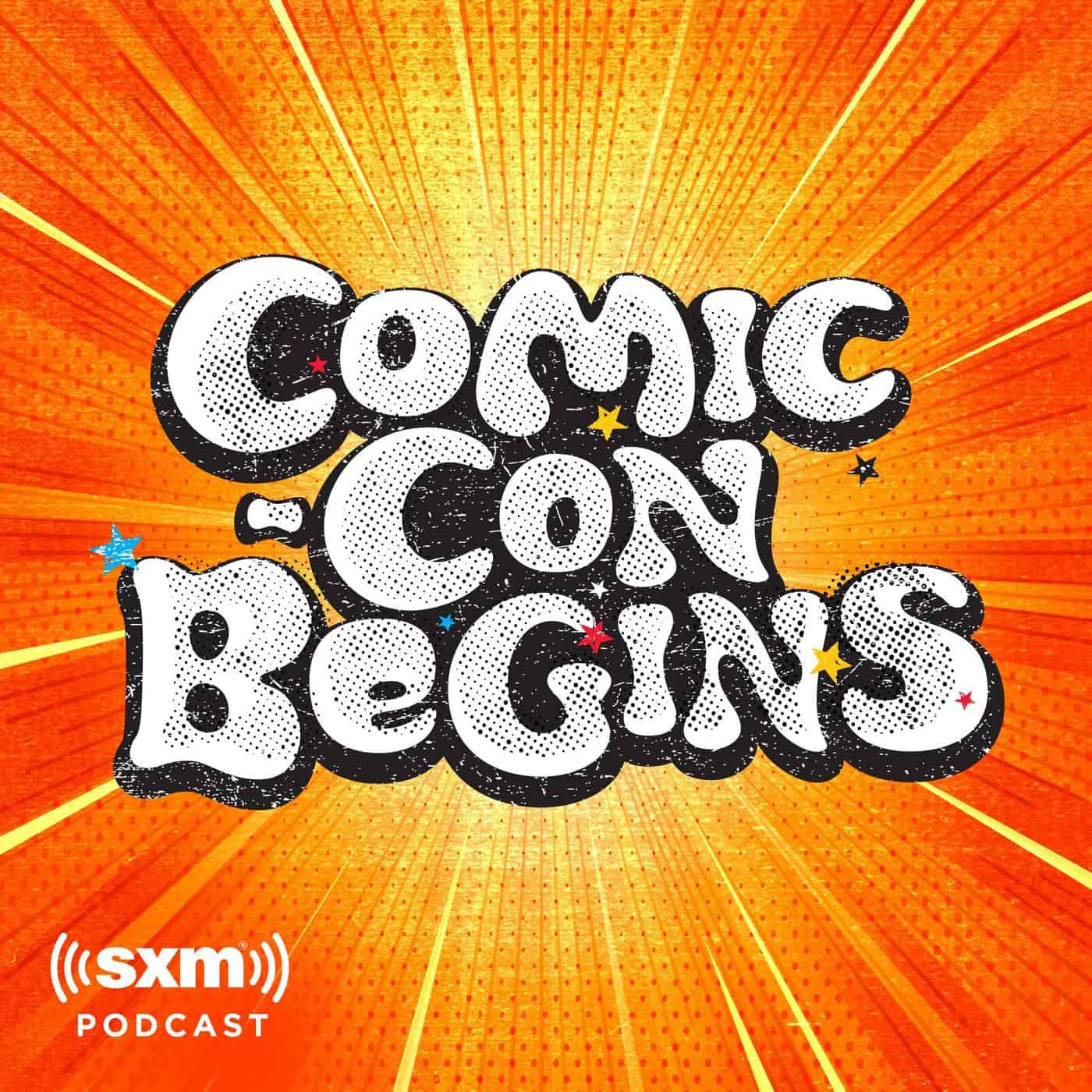
My friend asked if I wanted to do the SDCC story as a podcast series, I agreed, everyone else was in, and we went from there. It was so well received that two of our interviewees and supporters, cartoonists Stan Sakai and Ho Che Anderson, worked with us on getting the one and only publisher I thought would be appropriate to do the book version at this point: Fantagraphics. After all, Fantagraphics and publisher Gary Groth are part of the story, so why not just go to them and keep it in the family? At Stan’s and Ho’s nudging, Gary agreed to work with us. That was literally a year ago, and now … here we are.

SEE YOU AT SAN DIEGO: AN ORAL HISTORY OF COMIC-CON, FANDOM, AND THE TRIUMPH OF GEEK CULTURE
GVN: So, through bad fortune, the pandemic, and dare we say luck, the Podcast was born and a huge hit. With Fantagraphics now publishing it in book form, what can fans find in the book that might be different or perhaps fill in some gaps from the audio presentation?
MK: The audio doc series for SiriusXM/Stitcher is a little over seven hours. And that includes a bit of time per episode of contextual interstitials as read by our host and early Con contributor Brinke Stevens, who was absolutely fantastic through the whole process. The book, on the other hand, utilizes all seventy hours of interviews I conducted during the original process. So, right from the get-go, we’re talking more than ten times the material presented.
Not to mention the 400+ pics/art from the past century of fandom from private archives and college/museum archives and more. Much of this stuff has never been seen before. One of my favorite examples is a photo from the never-before-seen private archive of the late-great Clay Geerdes, which we were able to dip into courtesy Clay’s old friend Dave Miller who worked with us on. Dave sent me a scanned negative of a picture he almost rejected and set aside because it was mislabeled in some old box. Luckily, he used a magnifying glass to look at the person in the picture’s Comic-Con nametag.
A Mystery Photo Discovered
Well, it happened to be of Francis Ford Coppola at SDCC in 1974. Godfather 2 hadn’t even come out yet (but would a few months later), and we have this never-before-even-been-processed photo of Coppola in his all-white Fitzcarraldo suit and his big ol’ Ginsberg beard and the aviator glasses and the whole thing at the fifth SDCC.
I mean, that’s the kind of stuff people will be getting to check out beyond the audio doc series. And a lot of it. Wait’ll you see the pics we got from Kaufman’s crew over at Troma!

GVN: One of the interesting things in the Podcast was the evolution of Con from being centered initially on Comics to more diverse Pop Cultural phenomena like Star Trek, Star Wars etc. Does your book take a deeper dive into that transition?
MK: That’s a good question and without giving too much away, as well as to prove I can be brief in my responses: yes. Yes, it does.
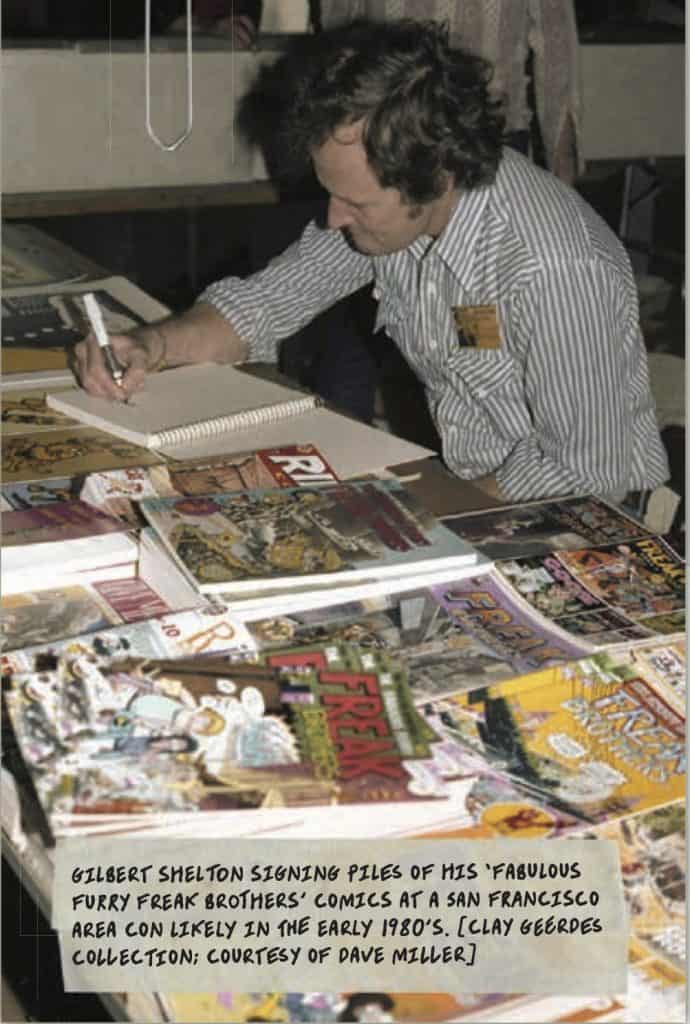
GVN: (Laughing) So NOW you choose to be brief! That’s ok. That why getting the book is such a great idea. As you progressed in the book, was there anything you found that was surprising or perhaps overlooked that fans might have missed looking from the outside in?
MK: Definitely because it continues to come up in interviews and panels at conventions etc… what surprised me most is learning that people need to stop complaining “Comic-Con is no longer about comics.” It was never just about comics. Ever. Not at its first one-day mini-con that fundraised the very first Con a few months later, and not even in some of its earliest precursors. Events like the Triple Fan Fair in Detroit that was so named because it was a convention of more than just comics: also, movies, and animated cartoons.
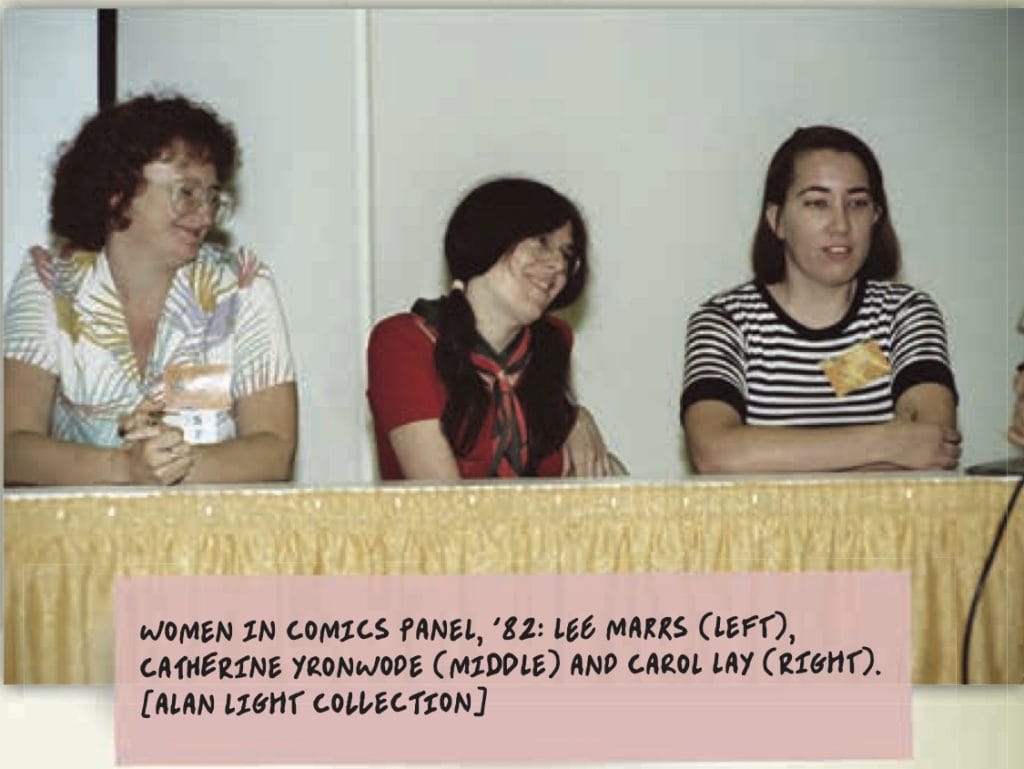
SDCC has also always been about science fiction (let’s all work together to stop calling it sci-fi, by the way). It’s also always been about fantasy stories. Magicians. Juggling and yo-yoing. Martial arts, Bruce Lee, professional wrestlers (the last few mentions which are the closest thing we’ve ever gotten to real superheroes here on terra firma earth, especially folks like Bruce Lee or Andre the Giant). It’s also been about hard science, too. Interest in the likes of Carl Sagan, Richard Feynman, Stephen Hawking and the others who helped mainstream the sciences for popular audiences during the early seventies and eighties.
There have been panels with, discussions about, and rooms/tables set up for all this stuff at Comic-Con since Day One. In fact, they had a special area cordoned off just for Star Trek as early as 1973. That’s SDCC #4. So, it’s been part of the scene there since the beginning. It’s never just been exclusively about comics. It’s always been about all pop culture.

Upcoming Projects
GVN: Thank you once again for your time Mathew. Before I let you go, do you have any other projects you would like our followers to know about and where can fans follow you on social media or the web?
MK: And thank you, as well. People can read up on my past, present, and future via my regularly updated website: www.MathewKlickstein.com.
There will also be a full-fledged tour around the country and Toronto we’re doing with special guests, panels, movie screenings, museum/college lectures or more. You can see that information on my website as well. It’ll be going from early September through mid-November.
Audiobook Version
There will also be an audiobook version of the book coming out through Blackstone with an entire cast of voice actors onboard. It comes out the same day as the book. It doesn’t include all the photos/art of course, but it’s still worth a checkout if you’re really into this kind of thing.
In November, Callisto Media who tapped me to come onboard my next project will be releasing my Little Encyclopedia of Jewish Culture, a concise and lighthearted but extensive deep-dive exploration of all manner of Jewish culture, from food and locales, to movies, books, music, and art. It will also be illustrated.
More for the Con
I’m additionally working on a few projects with some of the Con folk in my podcast and book, which is cool. A lot of us have become really close, and I appreciate that. I’ll be doing a graphic novel with early Con contributor and graphic novelist Rick Geary, for instance. We have that coming out through Fantagraphics upcoming here in the next year or two, I believe. (Rick is still finishing the art for it as we speak!) It’s based on an old novella of mine called Daisy Goes to the Moon, and Rick’s early designs are stunning. Can’t wait to see that.
One Place Left to Go
A few other things in the works, some stuff I can’t really talk about, but moves are moving and let’s just say that we’ve already done the podcast, book, and audiobook story of Comic-Con and pop culture nostalgia/fandom over the past century. So … there’s really only one more place left to go with it …
Fantagraphics, See You at San Diego: An Oral History of Comic-Con, Fandom, and The Triumph of Geek Culture by Mathew Klickstein comes out on September 6th. While you wait, you can listen to the Comic-Con Begins podcast which can be found here.
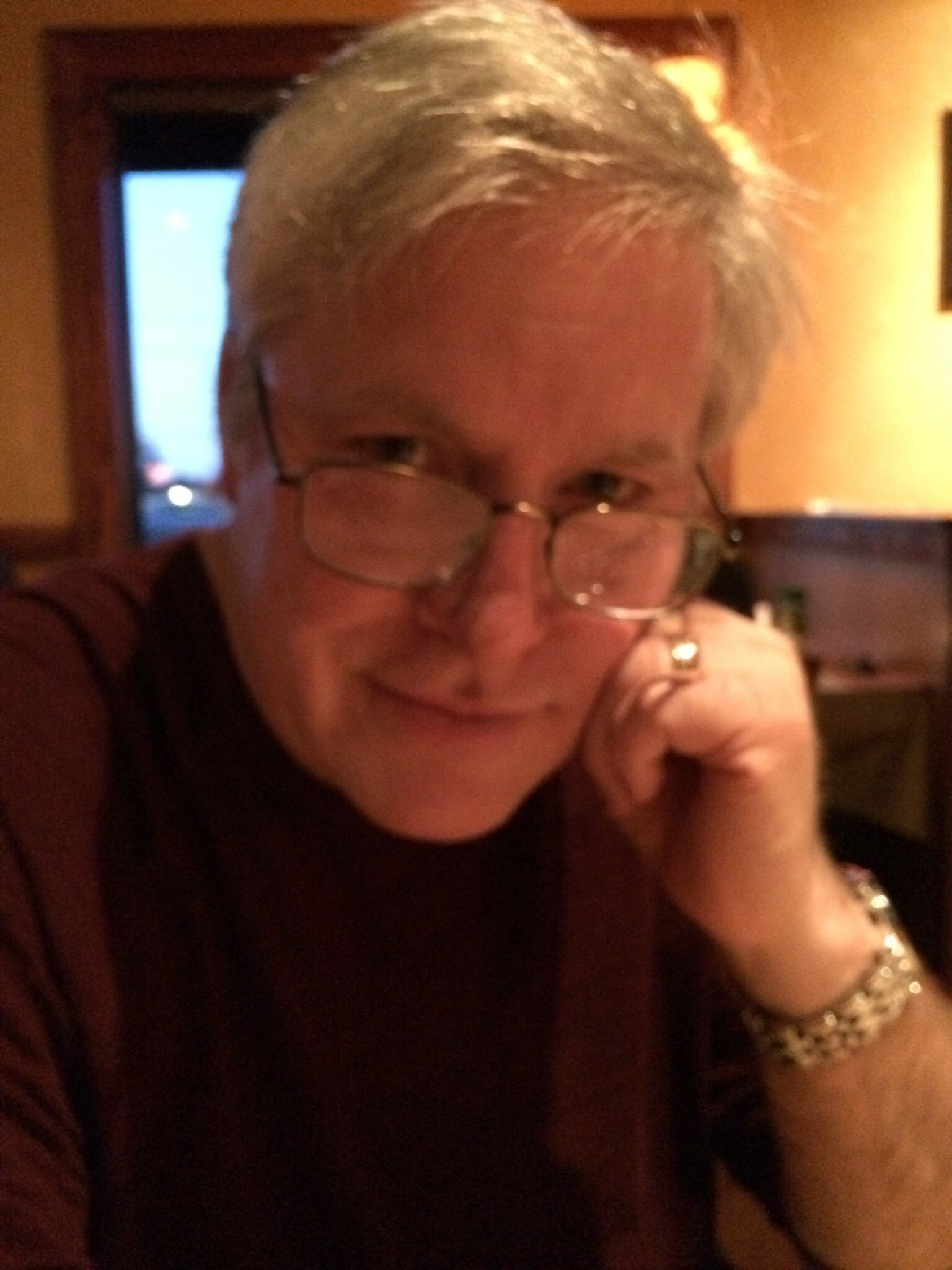
Senior Writer at GeekVibesNation – I am a 50 something child of the 70’s who admits to being a Star Trek/Star Wars/Comic Book junkie who once dove head first over a cliff (Ok, it was a small hill) to try to rescue his Fantastic Four comic from a watery grave. I am married to a lovely woman who is as crazy as I am and the proud parent of a 18 year old boy with autism. My wife and son are my real heroes.


